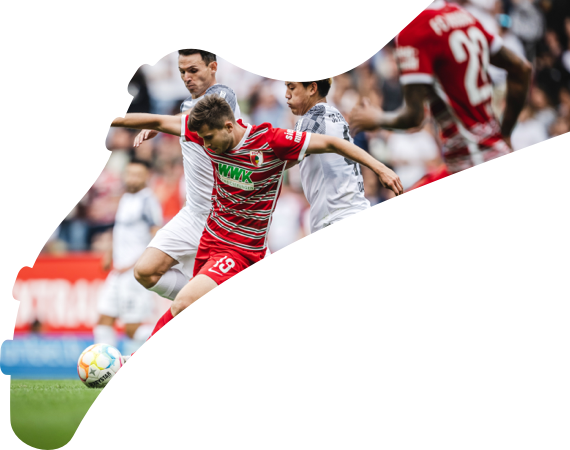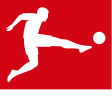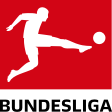
RheinEnergieStadion: Cologne’s cathedral to football
The RheinEnergieStadion is one of Germany's finest examples of a classic football stadium. Four stands are anchored by four giant red-and-white towers and hold 50,000 supporters right at the edge of the pitch and on the edge of their seats. Add in a goat and a rousing anthem, and you have an atmosphere unlike anything else in Europe.
bundesliga.com takes you inside one of Germany’s most unique football grounds…
History
The grounds of 1. FC Cologne's stadium are part of a larger story of 20th-century Cologne. Since its founding over 2000 years ago, the city had always been protected by walls and fortresses, but following the First World War, these were removed, leaving a wide strip of open land on the western outskirts. On the initiative of then Cologne mayor and future German chancellor Konrad Adenauer, a section of this land was developed into a large sports complex with a stadium at its heart.
The stadium was completed in 1923 and, together with the surrounding facilities, was the largest sports complex in Europe at the time. Even today, the area surrounding the stadium contains running tracks, swimming pools, and also the German Sports University: Cologne play in a sports paradise!
The Müngersdorfer Stadion, as it was known, was an excellent venue for football for five decades and became the home of FC Cologne after the club's formation in 1948. In 1963, when Cologne were crowned champions of the inaugural Bundesliga season, some 76,000 could gather to watch their team in the stadium.
Watch: Inside the RheinEnergieStadion

The end for the old ground came with the 1974 FIFA World Cup in West Germany. As one of the country's largest and most football-mad cities, Cologne naturally bid to host some of the matches. As part of this endeavour, it was decided that more modern facilities were needed. Plans were drawn up for a 80,000-seat stadium, but, as construction progressed, costs began to skyrocket. With projections suggesting a final cost more than three times the original budget, Cologne had no choice but to put the project on hold and pull out of hosting World Cup matches.
One year after the World Cup, Cologne did complete their new stadium, with a capacity of 61,000. The new Müngersdorfer Stadion did not have to wait long for glory: Cologne won their second Bundesliga title, and with it a domestic double, in 1978.
It was another World Cup that would bring the next stage in the evolution of Cologne's stadium. Germany would host the 2006 edition and this time Cologne made certain that they would be hosting international football. To do so, once again, a new stadium up to the latest standards would be needed.
Work began in December 2001 and, in January 2004, Cologne was the proud home of a new, World Cup-ready, 50,000-seat stadium. Unlike the two previous venues, the RheinEnergieStadion does not have a running track between the pitch and the stands. It was built to be a cathedral to football and football alone.
The stadium is modern construction of concrete, steel, and glass surrounded by manicured green fields. Most recognisable are the four giant corner towers that anchor the stands with a series of steel girders and cables. When the home team score, the towers are illuminated in the city and club's famous red and white.
Transport
By car: The RheinEnergieStadion is in the west of Cologne and is not far from the A1 Autobahn, which runs north-south past the city. From centre of Cologne, the best route is the east-west axis known as Aachener Straße, which passes just in front of the stadium. In either case, motorists need only look for signs saying "Stadion" to find their way.
Parking: Being located in such a beautiful, open setting, the stadium is blessed with around 7,500 nearby parking spaces.
By train: The stadium has its own dedicated tram stop, "RheinEnergieStadion", which is on Line 1 of Cologne's tram network. From the centre of the city, "Neumarkt" is one of the easiest places to get on Line 1. From Cologne Hauptbahnhof (central station) or Cologne/Bonn Airport, the regional train lines S-Bahn 12 and 13 serve Weiden West, which is the western terminus of Line 1. A match ticket also serves as a ticket for the local tram and train network.
Tickets
FC Cologne truly is a pillar of the community in Cologne and a strong element of the city's identity. For this reason, it's rare that one of those 50,000 seats is left empty. Ticket pre-sales are announced on the club's website and, if you're quick enough, you can get a ticket and join in the fun. If the club website is sold out, there is also a service that allows fans to buy and sell tickets.
Merchandise
The FC Cologne Fan Shop, located in the north stand, is the place to pick up a scarf or a shirt to get into the spirit at the match. The Shop is not only open on matchdays, but the from Monday to Saturday, making it perfect to combine with guided tour of the stadium.
Tours
FC Cologne provide several options for tours around the RheinEnergieStadion. The main tour lasts 75-90 minutes and takes guests around the stadium and into the dressing rooms and onto the pitch. There are also nighttime tours, special tours with figures associated with the club or a local rapper, and even tours given in the local language, Kölsch. Click here for further information about tours of the RheinEnergieStadion.
Did you know?
Before every home game, during the singing of the FC Cologne anthem "Mir stonn zu dir, FC Kölle" (We stand by you, FC Cologne), sung in the local Kölsch language, an attendant brings out the club mascot, a goat named Hennes. Hennes IX, to be more precise, reigning since the August 2019 retirement of his predecessor. Named after legendary player and coach Hennes Weisweiler, the first Hennes was given to the club in 1951 as a carnival joke, and a goat soon became part of the club crest.
Related news

How do Leipzig and Leverkusen stack up?
Leipzig host Leverkusen at the Red Bull Arena on Saturday, having ended the champions' record-breaking unbeaten run earlier in the season.

Goretzka grabs new chance at Bayern
He was firmly out of favour at the start of the season, but Leon Goretzka has forced his way back in impressive fashion.

5 reasons behind BVB's slump
bundesliga.com takes a look at the problems the Black-Yellows have encountered this campaign as Nuri Şahin is relieved of his duties.


